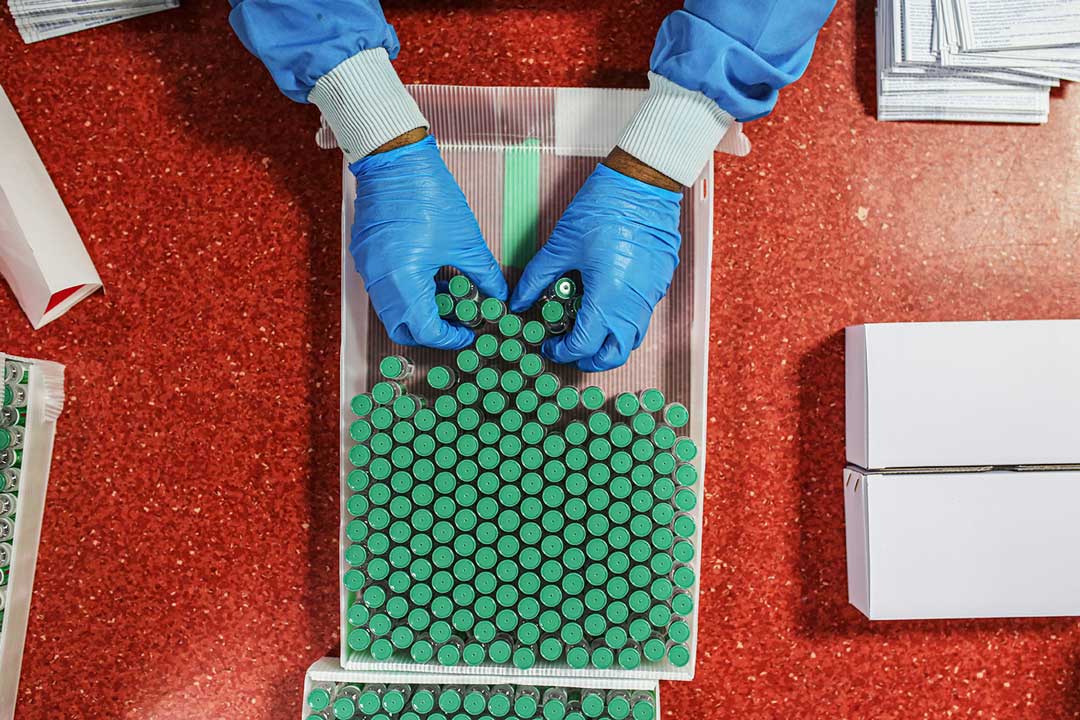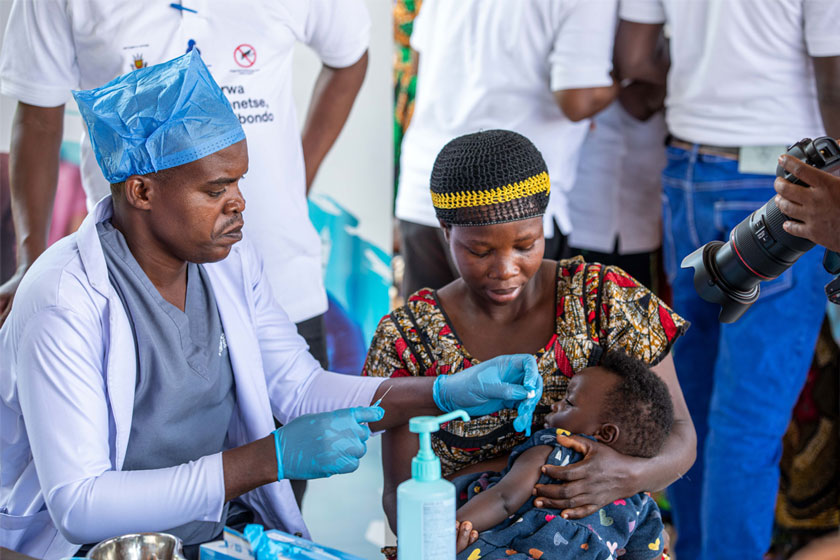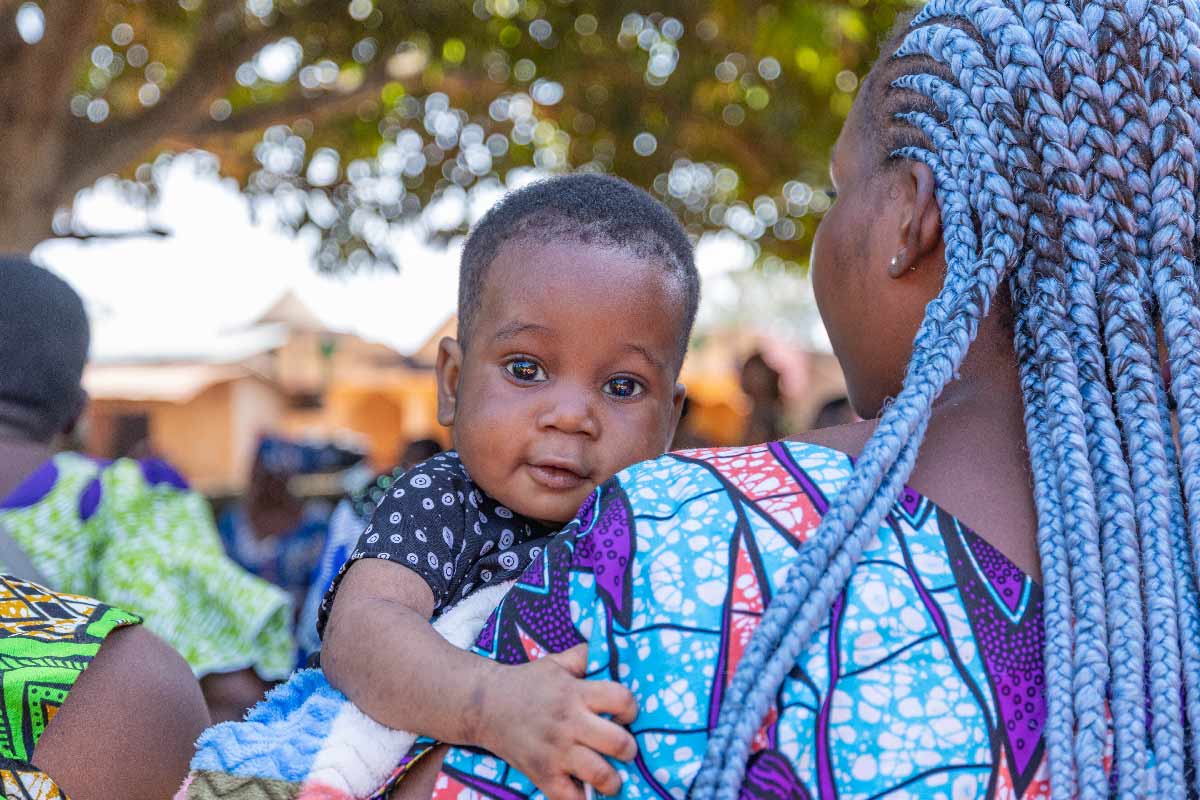How to make sure COVID-19 vaccines reach as many people as possible
As more COVID-19 vaccines become available, countries the world over are now faced with the daunting task of carrying out mass vaccinations. Here, one expert explains how her organisation is supporting rollouts in the US and offers insights into the best strategies to take.
- 3 March 2021
- 6 min read
- by Gavi Staff

A year into the COVID-19 pandemic, we find ourselves in a moment of tremendous hope with highly effective vaccines, yet we also face incredible challenges and bottlenecks in the systems required to deliver the vaccines to people who need them.
Vaccine delivery is something that VillageReach has been doing for 20 years. Our work with ministries of health in the Democratic Republic of the Congo, Malawi and Mozambique has taught us a lot about what it takes to deliver vaccines efficiently and equitably. Recently, we have had the privilege of lending our support to efforts underway in Washington State, where VillageReach is headquartered in the U.S., as the region’s COVID-19 vaccine programme aims to vaccinate millions of people – quickly, efficiently and equitably.
In the coming weeks, as countries around the world prepare to introduce their first vaccine doses or scale up their programmes, here are some early insights from our experience in Washington – specifically lessons from our mistakes that can help inform better, faster and more equitable access to the vaccine elsewhere.
1. Invest in planning and coordination, and then stay flexible
This is the single greatest logistical challenge we have ever faced, and detailed planning and strong coordination are required to respond. In Washington State, we missed many of the details in the beginning and so several parts failed. In the U.S., our health system is fragmented and the absence of coordination among providers, the state, cities and community groups has led to mistrust, inequity and an inefficient vaccine rollout – and we see this all over.
To avoid making the same mistakes, countries should engage early in detailed micro-planning to develop realistic and costed plans for how the vaccine will be delivered. This is difficult in times of uncertainty, but some plans can be made up front to surge workforce, establish coordination mechanism and plan for expanded service delivery options. To develop these plans, it can help to do simple scenario planning to estimate the anticipated throughput of different vaccine strategies and the impact on cost, workforce and access. Then, use those plans to reinforce the delivery systems where needed and ensure that all the stakeholders involved are aligned and able to communicate in real-time, because even the best plans aren’t going to work exactly as they should. It is important to recognise this up front and build in the flexibility to learn and adjust as you go.
2. Expand the workforce
Surge support is critical to bolster the existing health workforce. The current health workforce alone isn’t large enough to handle an undertaking of this magnitude even in a normal year – and especially not while also responding to a pandemic. When we started, we did not have a sufficient workforce in place. However, surge capacity existed in volunteer networks, clinical students, private sector partners, fire departments and even the National Guard, which are now all supporting high volume vaccine sites.
For context, to vaccinate up to 1,000 patients a day, a single community-based mass vaccination site here in Washington State requires 50 staff on-site, including six vaccinators, other clinical staff and multiple non-clinicians for data and crowd management.
If one site requires 50 people, imagine how many staff are needed to manage our state's goal of vaccinating 45,000 people a day. It quickly becomes apparent that the workforce needs are far greater than we had forecasted.
3. Ensure equitable access
I would argue one of our greatest failures has been ensuring equitable access to the vaccine. Data shows that the pandemic has disproportionately impacted Black, Indigenous and People of Color (BIPOC), including immigrants and refugees, across health, education and economic indicators in our state. These same inequities are visible in vaccine access now at a time when we have limited supply. We have to put in place various strategies that provide direct, equitable access.
Have you read?
No single vaccine delivery mechanism will be sufficient to reach everyone. Mass vaccination sites are great for high volume and vaccinating multiple people in one day, but don’t work well for people with limited mobility or who live far away. Many people are accessing vaccines through their normal health care providers and clinics, but this approach does not reach people at scale or reach individuals without established health care providers. It’s critical to tailor vaccination strategies that will ensure timely and equitable access, particularly for those who are hard to reach. In Washington State, we now have six different strategies including high volume sites in urban areas, mobile vaccine teams, distribution through routine health providers and through community structures.
4. Manage the demand
Until more vaccine doses become available, the supplies we have must be carefully matched with demand. Currently, I hear a great deal of discussion about the need to address growing fears and vaccine hesitancy. No doubt that this is of critical importance, and communications to build confidence will be essential, but this isn’t the problem we’re seeing right now.
In this time of vaccine scarcity, we are finding it difficult to manage the demand that does exist. Vaccine appointments are filled within seconds of being released and there are many people on long waitlists for the vaccine or spending hours per day searching for available vaccines.
It is important to consider strategies to match your eligible population to the vaccine supply available. For example, if you only have 200,000 doses, be sure your eligible population isn’t 2 million. Consider whether a pre-registration and light scheduling system is feasible to allow you to plan for who will receive vaccines and when, prepare all the accompanying resources required for the session and manage the expectations of the community to avoid large crowds and frustrated people. Even for the initial health workforce target population, some demand management system will be needed to coordinate who gets the vaccine and when to avoid the entire workforce queuing up for the vaccine at the same time. Obviously, this is a difficult time to introduce any new information systems, so build from what exists or ensure the system is simple.
5. Know your data
There are two critical pieces of information that stakeholders are going to want to know in real-time: 1) how many doses have been allocated to a particular provider; and 2) how many doses have been administered. There are other data points, to be sure, but these are the baseline. Because our health system here is fragmented, our data systems do not easily talk to each other. It took weeks to establish a dashboard to view this simple information and because of that decision-makers did not have the information they needed early on, leading to costly delays in getting people vaccinated. It is critical to ensure there is a simple system in place at the scale required.
In order to reach everyone with COVID-19 vaccines quickly, efficiently and equitably, we need to invest in the systems to deliver the vaccine and use the early experiences from countries that are rolling out vaccines to inform better strategies.









